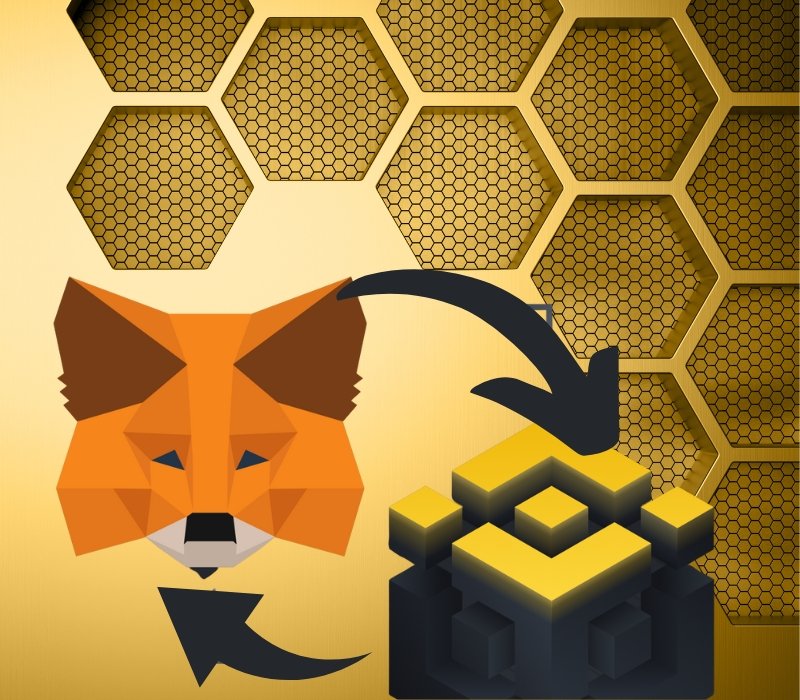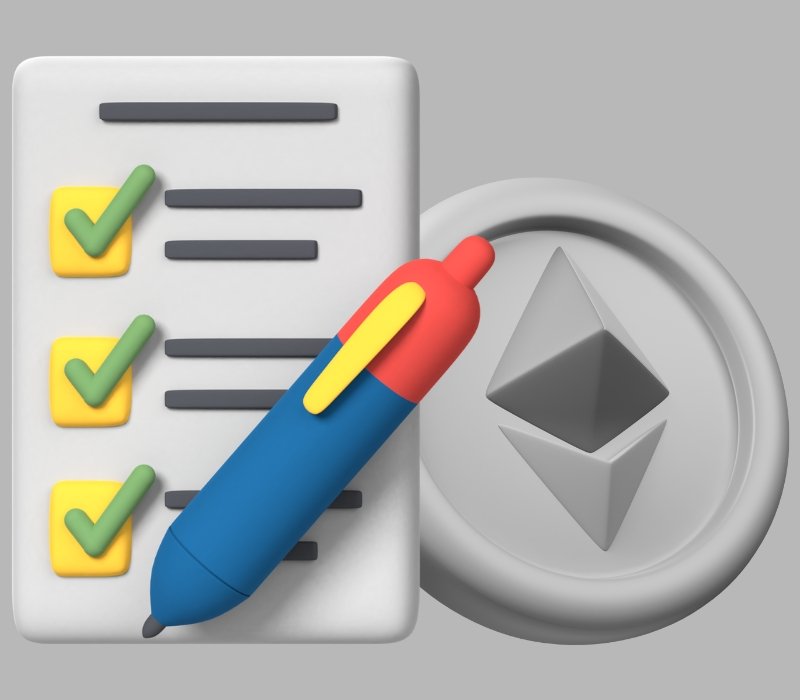Cryptocurrency has become a popular topic of discussion in recent years. With the rise of Bitcoin and other cryptocurrencies, people are becoming more interested in investing in digital assets.
But have you ever thought of creating your own cryptocurrency? It might seem like a daunting task, but with the right tools and knowledge, you can create your own cryptocurrency in just 15 minutes.
Yes, you heard it right! In this article, we will explore the step-by-step process of creating your own cryptocurrency and even provide a live example of creating a token on the Ethereum blockchain.
What is a Cryptocurrency?
Before we dive into the process of creating your own cryptocurrency, let’s first understand what cryptocurrency is. A cryptocurrency is a digital or virtual currency that uses cryptography for security.
Cryptocurrencies operate on a decentralized network called a blockchain, which allows for secure, anonymous transactions. Each cryptocurrency has its own set of rules, algorithms, and protocols.
Cryptocurrency has gained popularity due to its potential for financial freedom, privacy, and borderless transactions.
Why Create Your Own Cryptocurrency?
You might wonder why you would want to create your own cryptocurrency when there are already numerous cryptocurrencies available in the market.
Well, creating your own cryptocurrency can have several advantages, including:
- Personalized Branding: Creating your own cryptocurrency allows you to establish your brand and identity in the digital world.
- Flexibility: You have full control over the features, functionality, and supply of your cryptocurrency, allowing you to tailor it to your specific requirements.
- Innovation: Creating your own digital asset gives you the opportunity to explore new ideas and concepts, and contribute to the ever-evolving world of cryptocurrencies.
- Monetization: If your coin or token gains popularity, it can be a potential source of revenue through transactions, fees, or even an initial coin offering (ICO).
Preparing for Creating Your Own Cryptocurrency
Before you start creating your own cryptocurrency, there are a few things you need to prepare:
- Technical Knowledge: While you don’t need to be a coding expert, a basic understanding of programming concepts and smart contracts would be helpful.
- Development Environment: You will need a development environment for writing and deploying smart contracts. Tools like Remix, Ganache, and MetaMask can be useful.
- Solidity Language: Solidity is a popular programming language used for writing smart contracts on the Ethereum blockchain. Familiarize yourself with Solidity syntax and features.
Related: How to build a to-do list app on Ethereum
How to Create Your Own Cryptocurrency: Step-by-Step Guide
Now let’s dive into the step-by-step process of how to create your own cryptocurrency in just 15 minutes:
Step-1: Choosing the Platform
The first step in creating your own cryptocurrency is to choose a platform or blockchain on which your cryptocurrency will be built.
Ethereum is one of the most popular and widely used platforms for creating cryptocurrencies due to its flexibility and support for smart contracts. Other platforms like Binance Smart Chain, Solana, NEO, EOS, and Polkadot are also popular choices.
Step-2: Setting Up Development Environment
Once you have chosen a platform, you need to set up your development environment. This typically involves installing the necessary software and tools, such as a code editor, a compiler, and a wallet for interacting with the blockchain.
For example, if you have chosen Ethereum, you can use tools like Remix, Ganache, and MetaMask to write, compile, and deploy smart contracts.
Set Up Your Node
Once you have chosen your blockchain platform, you need to set up your node. A node is a computer that runs blockchain software.
Setting up your node is a critical step in creating your own cryptocurrency, as it will allow you to validate transactions on the blockchain.
Choose Your Consensus Mechanism
The next step in creating your own cryptocurrency is to choose your consensus mechanism. Consensus mechanisms are used to ensure that all transactions on the blockchain are valid.
There are several consensus mechanisms available, such as Proof of Work, Proof of Stake, Proof of Authority, and Delegated Proof of Stake. Each consensus mechanism has its own advantages and disadvantages.
You should choose a consensus mechanism based on your specific needs and goals.
Step-3: Writing a Smart Contract
The next step is to write a smart contract, which is a self-executing contract with the rules and regulations of your cryptocurrency.
Smart contracts are typically written in a programming language specific to the platform you have chosen, such as Solidity for Ethereum.
You can define various attributes of your cryptocurrency in the smart contract, such as its name, symbol, supply, and functionality.
Step-4: Compiling and Deploying Smart Contract
Once you have written the smart contract, you need to compile it into bytecode, which is the machine-readable form of the smart contract.
This bytecode is then deployed to the blockchain using a process called deployment. Deployment involves sending a transaction to the blockchain that includes the compiled bytecode of the smart contract.
Once the transaction is mined and confirmed, your smart contract is deployed to the blockchain, and your cryptocurrency becomes live.
Step-5: Interacting with Your Cryptocurrency
After your smart contract is deployed, you can interact with your cryptocurrency using various methods provided by the platform.
For example, you can send and receive transactions, check balances, and perform other operations using the functions defined in your smart contract.
You can also customize the functionality of your cryptocurrency by updating the smart contract and redeploying it to the blockchain.
Live Example: Creating a Token on Ethereum Blockchain
Now let’s take a live example of creating a token on the Ethereum blockchain using Solidity, one of the most popular programming languages for writing smart contracts.
Code Example: Solidity Smart Contract
Below is an example of a simple Solidity smart contract that creates a basic token with a name, symbol, and total supply of tokens:
pragma solidity ^0.8.0;
contract MyToken {
string public name;
string public symbol;
uint256 public totalSupply;
constructor(string memory _name, string memory _symbol, uint256 _totalSupply) {
name = _name;
symbol = _symbol;
totalSupply = _totalSupply;
}
}In this example, the name, symbol, and totalSupply are defined as public variables in the smart contract. The constructor function is called when the smart contract is deployed and initializes the values of these variables.
Deploying the Token on Ethereum Blockchain
To deploy the smart contract and create the token, you can use a tool like Remix, which is a popular Solidity IDE.
You need to provide the values for the name, symbol, and totalSupply parameters in the constructor function. Once you deploy the smart contract, a transaction is sent to the Ethereum blockchain, and the smart contract is deployed.
Interacting with the Token
After the token is deployed, you can interact with it using various methods provided by the smart contract.
For example, you can use functions like name(), symbol(), and totalSupply() to retrieve the values of the token attributes. You can also send and receive tokens using functions like transfer() and approve().
Difference between creating a Token and Coin
When it comes to the world of cryptocurrencies, the terms “token” and “coin” are often used interchangeably, but they do have some key differences.
Let’s take a closer look at the difference between creating a “Token vs Coin.”
Tokens
Tokens are created on existing blockchain platforms, such as Ethereum, Binance Smart Chain, or others.
They are essentially smart contracts that run on these blockchain platforms and represent digital assets with certain characteristics and functionalities.
Tokens can be created for various purposes, such as utility tokens for accessing a specific service or product, security tokens that represent ownership in an underlying asset, or governance tokens for participating in decision-making processes within a decentralized ecosystem.
Tokens are created using standard protocols, such as ERC20, ERC721, or ERC1155 for Ethereum, and BEP20, BEP721, or BEP1155 for Binance Smart Chain, which provide predefined sets of rules and functionalities.
Coins
Coins, on the other hand, are standalone digital currencies that have their own blockchain or network. Coins are typically created from scratch and require more technical expertise and resources compared to tokens.
Coins often have their own consensus mechanism, block generation process, and governance structure.
Examples of coins include Bitcoin, Ethereum, and Ripple, which are independent digital currencies with their own blockchain networks.
Pros and Cons of Creating Your Own Crypto
| Pros 👍🏼 | Cons 👎🏼 |
|---|---|
| Increased control and flexibility | High risk and complexity |
| Ability to create a unique brand | Limited acceptance and adoption |
| Potential for high returns on investment | Technical expertise required |
| Access to new funding and investment | Potentially high development and maintenance costs |
| Increased transparency and security |
Conclusion
Creating your own cryptocurrency can be a challenging but rewarding endeavor. With the right platform, tools, and coding skills, you can bring your vision of a digital currency to life.
By carefully planning, coding, testing, and promoting your cryptocurrency, you can create a unique and successful project that attracts users and gains traction in the ever-evolving world of cryptocurrencies.
FAQs (Frequently Asked Questions)
- Can anyone create their own cryptocurrency?
Yes, anyone with coding skills and knowledge of blockchain platforms can create their own cryptocurrency.
- How long does it take to create a cryptocurrency?
The time it takes to create a cryptocurrency depends on various factors, such as the complexity of the project, the platform is chosen, and the coding skills of the developer. It can range from a few days to several weeks or even months.
- Can I create a cryptocurrency for free?
Yes, you can create a cryptocurrency for free using open-source blockchain platforms like Ethereum. However, you may need to pay for gas fees or other expenses associated with deploying and interacting with the smart contract.
- Is it legal to create my own cryptocurrency?
The legality of creating your own cryptocurrency varies from country to country. It’s important to research and understands the regulations and legal requirements in your jurisdiction before creating a cryptocurrency.
- Can I create my own cryptocurrency without coding skills?
Creating a cryptocurrency requires coding skills as you need to write a smart contract in a programming language specific to the blockchain platform. However, you can collaborate with developers or use online tools that provide user-friendly interfaces for creating tokens without extensive coding knowledge.



